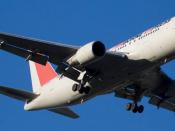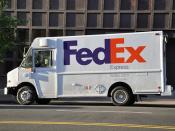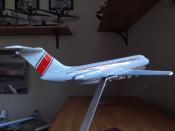Q1) What is the industry attractiveness like in 1997? Has it changed in recent years?
Q2) Does Airborne Express have a competitive advantage? Is it sustainable?
Q3) What recommendations will you give Airborne Express?
---------------ESSAY START ------------------
Industry Attractiveness in 1997
The industry is defined as the Domestic US Express Mail industry. This includes overnight and second day delivery. In order to assess the attractiveness of the industry, a Porters' Five Forces analysis has been conducted as follows.
Rivalry
The industry consists of three major players and six second-tier players. There is intense competition between the players as shown by the price wars between UPS and Federal Express. Although the market is growing at 15-20% annually, revenue growth has not kept pace due to falling prices. The players are also having difficulty differentiating their product as the other players quickly copy new innovations in the industry. The industry is highly capital intensive and the product is priced very low and hence, requires high volumes to generate returns.
Suppliers
The main suppliers in this industry (employees) have a lot of power. They have used their power at UPS to obtain higher wages and benefits. Other suppliers include airports and since there are a limited number of airports near major cities, they are also a powerful entity, especially during negotiation of landing fees. Fuel is another major input in this industry as fuel consumption is a major expense and one in which the players do not have much control over. Technology and equipment (planes, trucks) are the other suppliers, but they do not have much power as there are many alternatives available to the industry players and a good price for their products can be negotiated.
Customers
Customers include anyone who wants to send an urgent parcel/letter to someone else. Majority...


